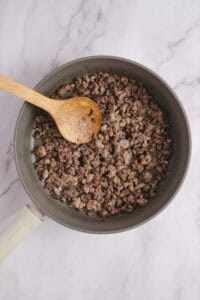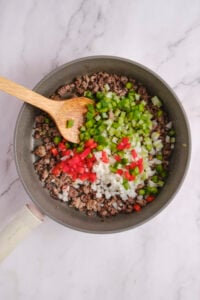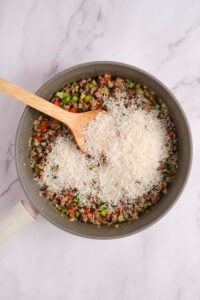Say “hello” to this spicy little rice dish that’s a meat-lover’s dream come true.
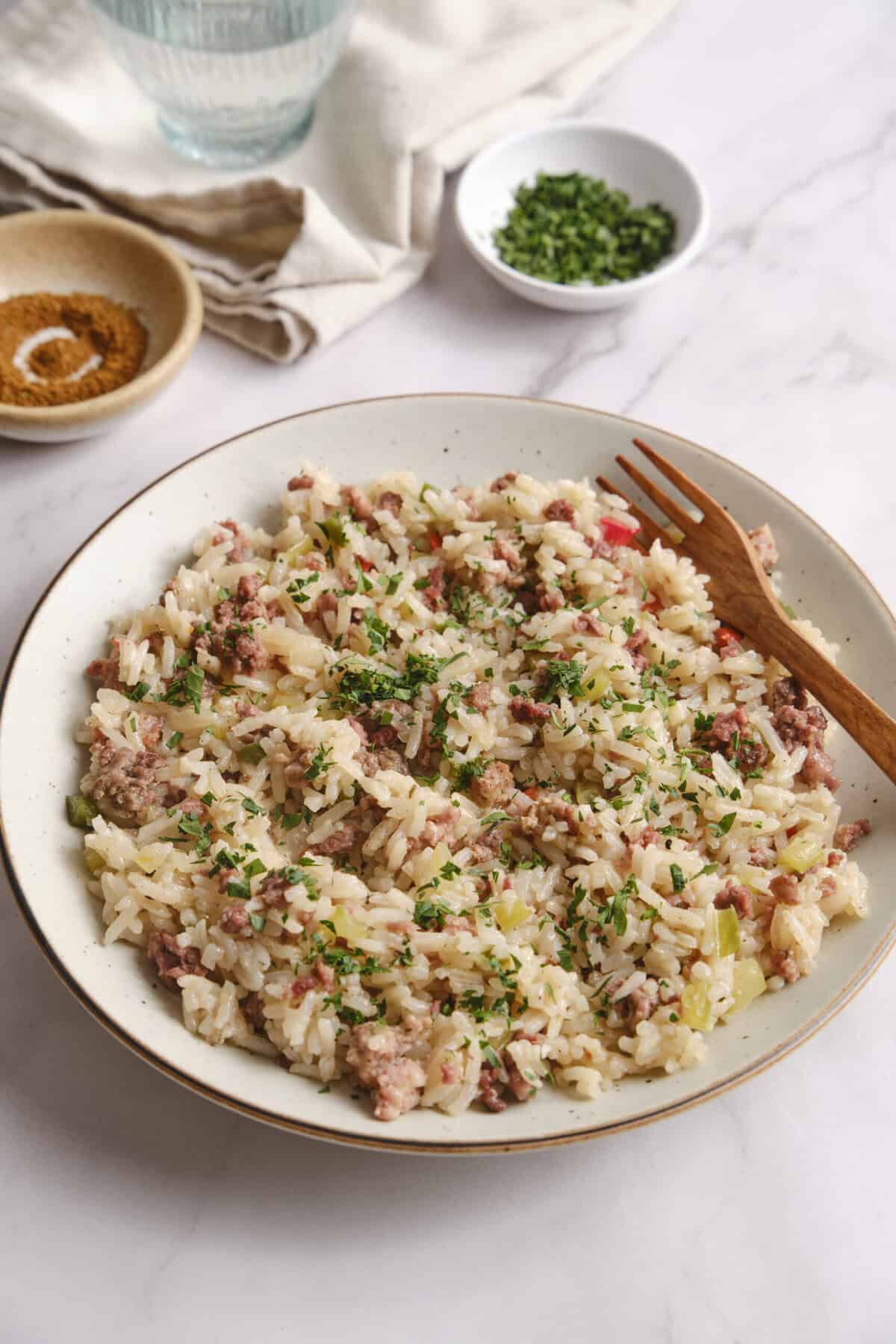
Have you ever wanted to make some rice with a little more “oomph” in it? Dirty rice is one of the tastiest ways to do it. This one-pan dish is more than a meal—it’s a 40-minute masterpiece, something that can be easily and artfully cooked for both quick weeknight dinners and elaborate celebrations. It turns classic staples like rice, beef, and turkey sausage, plus an array of scrumptious seasonings, into a meal the whole family could marvel at. Whether you’re serving a group or just yourself, dirty rice is well-equipped for both lunch and dinner.
Leftovers can sometimes taste even more delectable the next day, after all the flavors have mingled in the fridge. So don’t feel like you have to hold back from making more than one batch. If you’ve got a couple large skillets, this recipe can easily be doubled to suit your needs and desires. And remember: it’s just four simple steps. Once you get the hang of it, doubling and tripling the recipe will be as easy as pie.
With a beautiful balance of savory and spicy seasonings, plus tender grains and meat, dirty rice is an easy dish that every cook should have up their sleeve. Save it for a rainy day or have it every week. It’s that yummy!

Is Dirty Rice Healthy?
With a decent amount of protein, fiber, and a hint of vitamin C from the peppers, this dish is both delicious and nutritious. To accommodate vegetarians, simply use plant-based sausage or ground walnuts instead of turkey and beef. Additionally, you’ll need to replace chicken broth with vegetable broth. For those with a gluten allergy or sensitivity, make sure the broth you use is gluten-free. Lastly, for meat-eaters seeking to cut back on fat, try using ground chicken or turkey instead of beef.
Where Did Dirty Rice Originate?
Food historians say that dirty rice originated on Louisiana plantations. Enslaved people—many of them with rice-growing expertise from West Africa—made the dish with leftover bits of animals that weren’t used in the plantation house. Think: ribs, necks, liver, gizzard, heart, and other organs. All those less appealing ingredients would turn white rice brown or gray, inspiring the name “dirty rice.” This origin story remains a testament to the creativity and resilience of those who made nourishing meals from limited resources. Today, it’s still considered an affordable dish, and it’s celebrated across Louisiana and beyond as both a side and a main dish. But there’s much more freedom when it comes to the kind of meat and veggies to include these days—like the “holy trinity” of Louisiana cooking: onions, celery, and bell peppers.
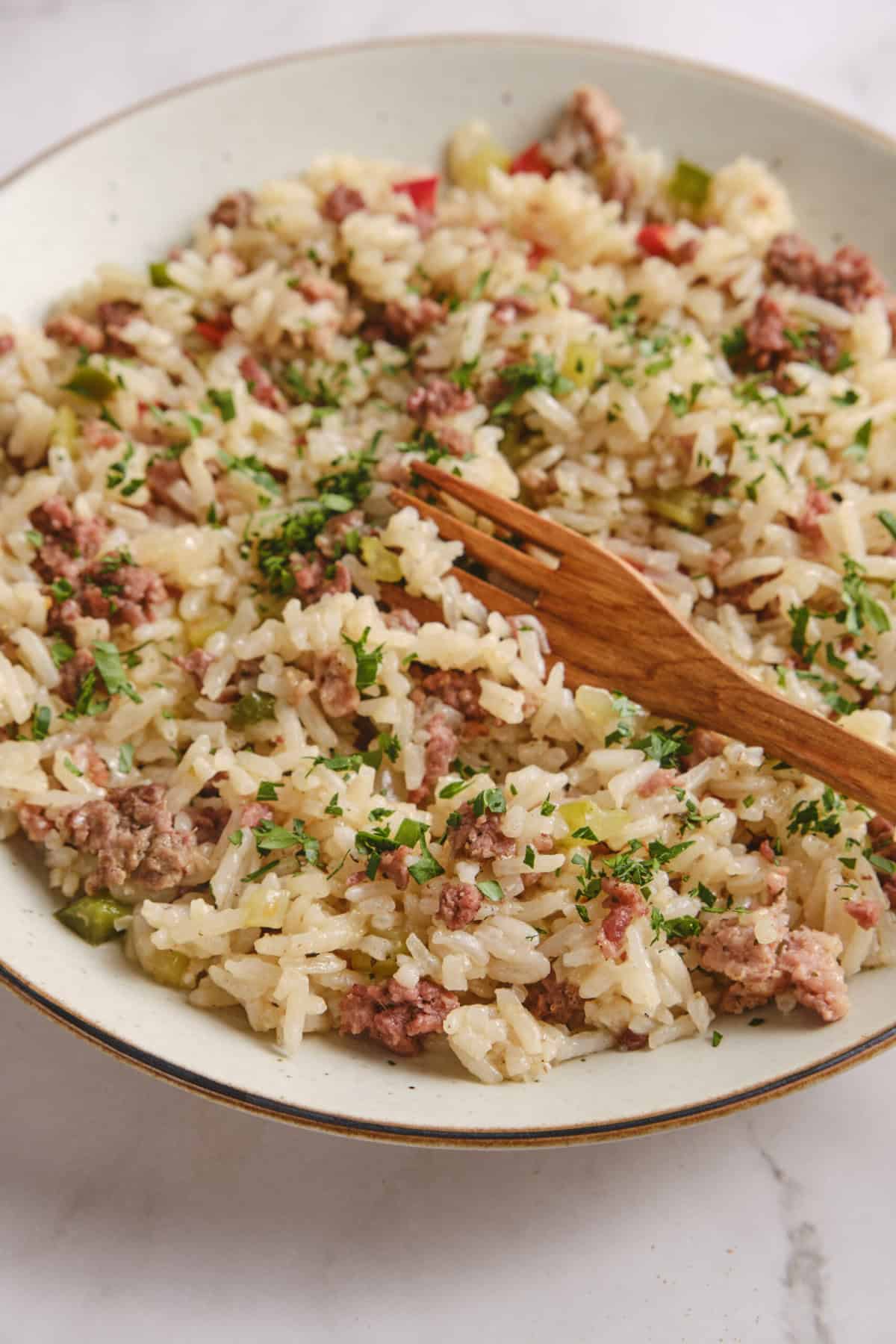
FAQs & Tips
Let the dirty rice cool, then transfer it to an airtight container. Refrigerate it for up to 3 days, or freeze it in a freezer-safe container for up to 3 months. If you freeze it, make sure to thaw it in the fridge overnight before reheating the next day. Turn the stove to medium heat and warm up the dirty rice in a pan with a splash of broth or oil. Stir occasionally until it’s warm all the way through, steaming slightly.
To save yourself some time, pre-cook the rice and store it in its own container in the fridge for up to 3 days. That way, when you go to make dirty rice, you only need to follow steps 1 and 2 (cooking the meat and veggies). From there, mixing in the cooked rice and broth should only take 5-10 minutes until everything’s cooked together. Just remember, if you take this route, it’s not advisable to keep leftovers and reheat them again.
While both dishes share the use of fragrant and hot Cajun spice, there are some distinct differences. For starters, a typical jambalaya recipe works like a stew, with all the ingredients simmering slowly in a pot or Dutch oven. Cooking everything together like this allows the rice to soak up a lot of flavor and yields a rich, creamy consistency. In most dirty rice recipes, the rice, meat, and veggies are sautéed in a pan, resulting in a looser, dryer texture. Jambalaya also typically has a tomato-based sauce, which dirty rice does not. Plus, the kinds of meat that are included vary from recipe to recipe, with jambalaya leaning toward a combo of seafood, chicken, and sausage, whereas dirty rice usually calls for ground meat. Keep an eye out for these differences while you’re exploring two of the most popular dishes from Cajun and Creole culinary traditions.
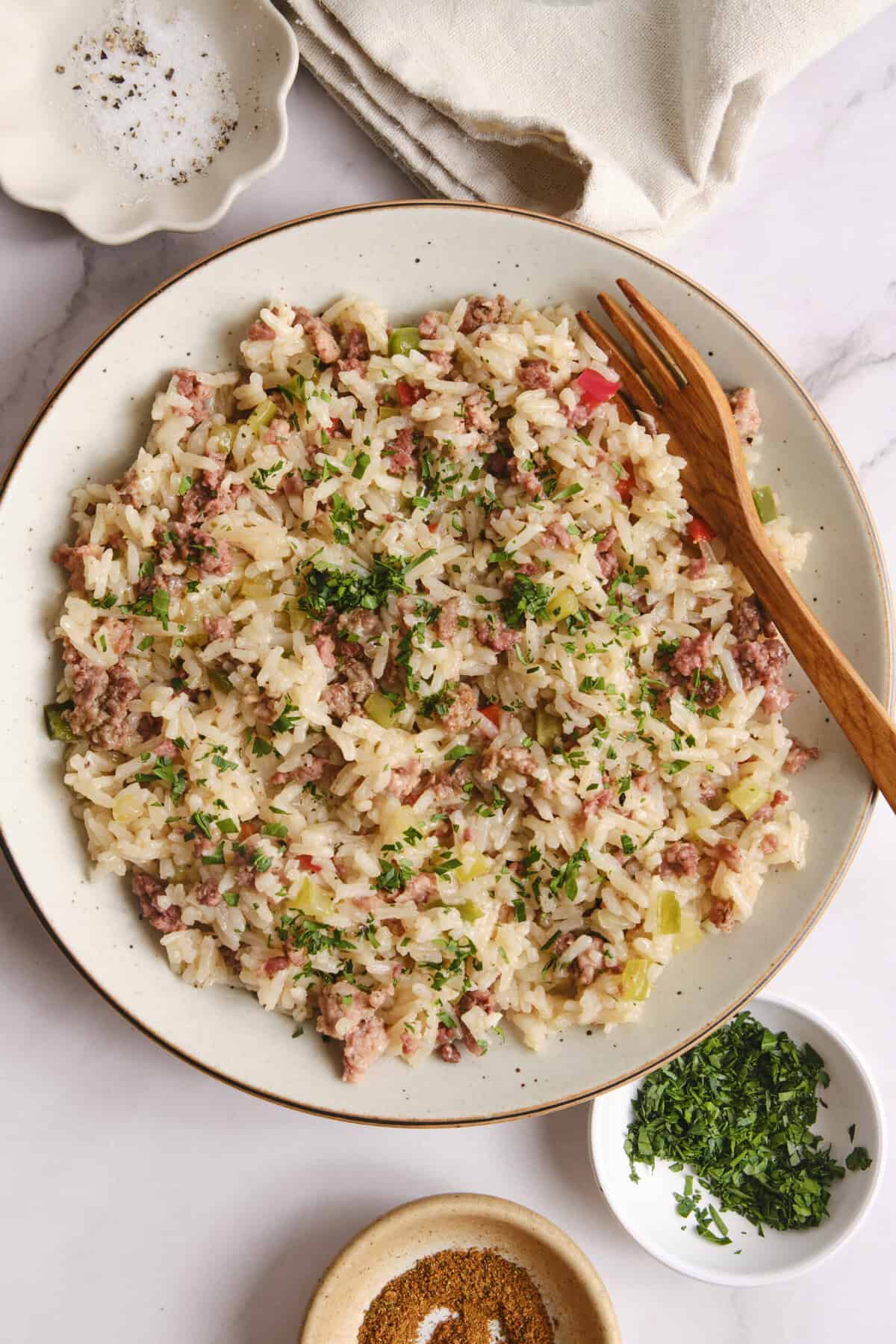
Serving Suggestions
Top off your bowl of dirty rice with freshly chopped parsley or cilantro. This brightens the whole dish and ties it together nicely. Expand your meal by serving it with a side of Pickled Okra, Cornbread With Creamed Corn, Roasted Green Beans, or Garlic And Lemon Swiss Chard. For an extra boost of protein, pair it with Pan-Seared Shrimp or Cajun Wings. As you can see, both mild and spicy sides complement dirty rice well.
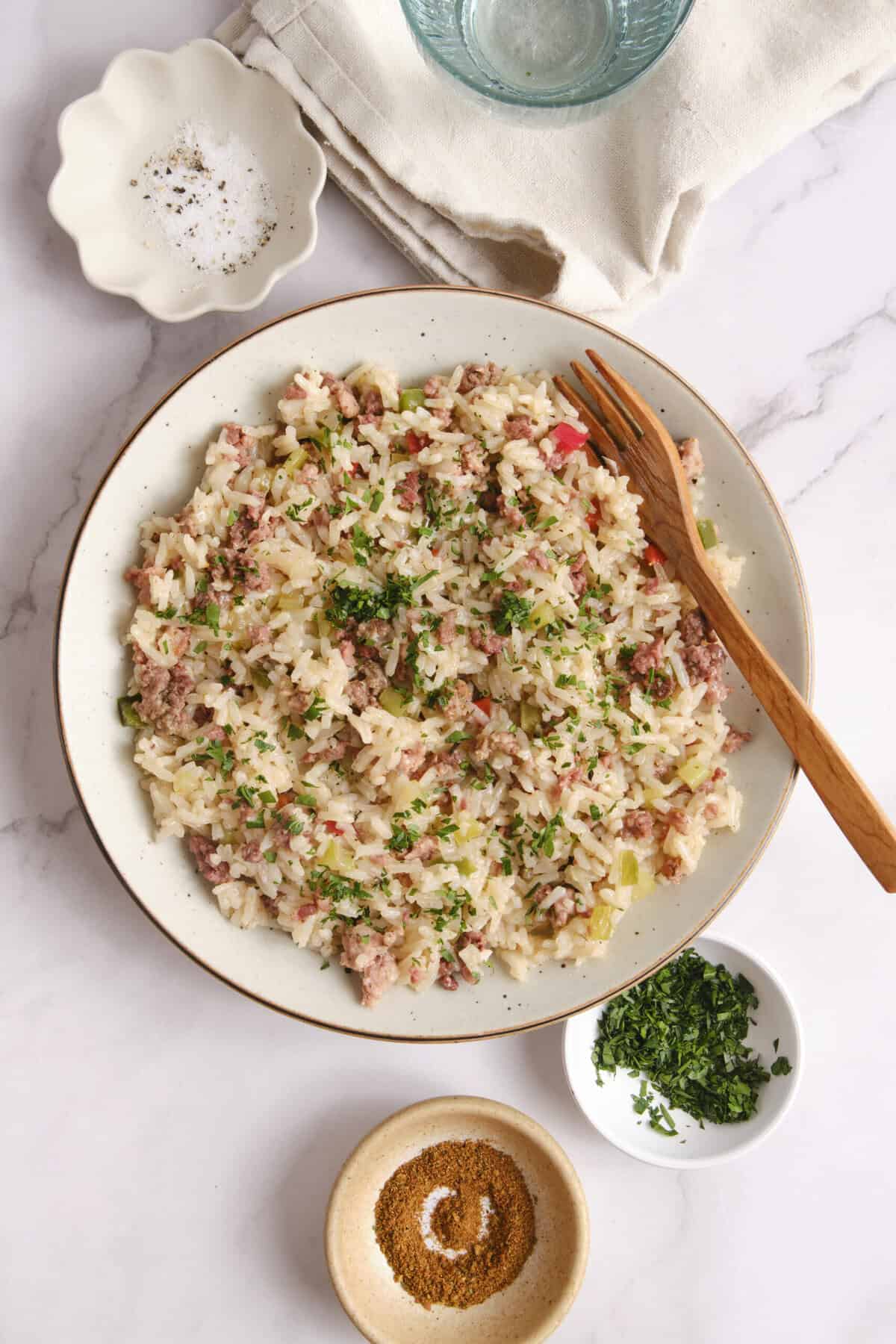

Dirty Rice
Ingredients
- 1 tablespoon olive oil
- 1 pound lean ground beef
- 1/2 pound turkey sausage casings removed
- 1 small yellow onion diced
- 1/2 medium green bell pepper diced
- 1/2 medium red bell pepper diced
- 2 celery ribs diced
- 3 garlic cloves minced
- 2 1/2 teaspoons Cajun seasoning plus more to taste
- Kosher salt to taste
- Ground black pepper to taste
- 2 cups long grain white rice uncooked
- 4 cups low sodium chicken broth
- 1/4 cup chopped fresh parsley optional
Instructions
-
Heat olive oil in a skillet over medium heat. Add ground beef and turkey sausage; cook until browned.

-
Add the diced onion, green and red bell pepper, and celery to the pan. Stir in the minced garlic, Cajun seasoning, salt, and pepper. Cook for about 5 minutes until the vegetables soften.

-
Add uncooked rice and chicken broth. Bring to a boil, then reduce heat. Cover and simmer for 20-25 minutes or until rice is tender.

-
Remove the skillet from heat and let stand, covered, for 5 minutes. Add more seasoning if needed. Fluff the rice with a fork, and garnish with chopped parsley before serving.

Nutrition
The post Dirty Rice appeared first on Food Faith Fitness.

